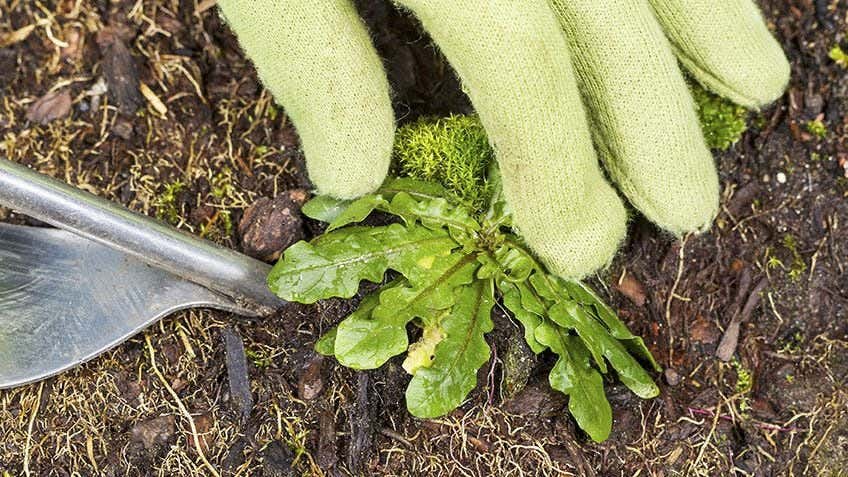How to Destroy Common Garden Weeds
We’re seeing weeds popping up everywhere in the area so we think it’s about time we introduce you to this handy guide on how to identify and control weeds for a cleaner, healthier and prettier garden.
1. Know the type of weeds
Before you can successfully control or eradicate weeds, it is important to understand their characteristics and growth habits. Generally, all weeds have some of these basic traits:
- vigorous and persistent growth, allowing them to establish themselves quickly and often grow faster than plants already there;
- difficulty in eradication;
- propagate easily from roots left lying on the ground;
- a short life cycle of some weeds means seed is produced quickly;
- produce large quantities of seed;
- spread seed quickly through special dispersal methods such as burrs;
- seeds can remain dormant in the soil for many years.
Like all plants, weeds fall into two main groups. You need to know this if you are planning to use a chemical (herbicide) to control a particular type of weed.

Monocots
Plants producing one seed leaf when they germinate. The leaf is long and narrow, and has parallel veins, eg. grass.
Discots
Plants producing two leaves on germinating. Leaves are broad and have a network of veins, eg. clover.
Growth habits
You should also know whether weeds grow annually, biennially or perennially – this can determine your method of controlling them, either by chemical or mechanical means.
Annuals complete their cycle in one year or less and may have several generations in that year. Aim to destroy them before they produce seed. Some examples are Cape Weed, Winter Grass, Stinging Nettle, Chickweed, Bindii and Petty Surge.
Biennials have two year cycles, flowering and producing seed in the second year. They should be destroyed in their first season. Examples include Fennel, Patterson’s Curse, and Evening, Blackberries, and Carpet Grass are prime examples.
2. Weed Control
Most weeds in the home garden can be effectively controlled with good garden practices such as:
- removing weeds as soon as they appear
- mulching where possible to suppress weed growth
- ensuring soil introduced is free of invasive weeds
- removing annual weeds before they seed
- removing perennial weeds before they seed and ensuring you get their roots as well

Hand Weedling
Probably still the best method in the home garden or for small areas.
Mechanical Weeding
Using a garden fork, cultivator or Dutch hoe to remove weeds is the most practical and sensible method in many cases. The secret is to spend just a few minutes a day when the weeds are small and easy to remove rather than putting it off until the problem gets out of hand. Then it becomes a back-breaking task – and an unnecessary one – spoiling your pleasure of gardening.
Mowing
Regular mowing of lawns prevent taller weeds from flowering and seeding.
Mulching
Smothers weed seedling before they become a problem and has the added benefits of keeping the soil moist and cool in summer.
3. Use Herbicides
First, read the instructions on the container and follow them carefully. Herbicides are poisonous so familiarise yourself with first aid directions, too. Mix only according to the directions and apply with a sprayer or watering can. Avoid spraying on windy days where spray mist could drift onto cultivated plants. It could also blow onto you, so wear appropriate protective clothing.
After use, thoroughly wash out the sprayer or watering can. Wash yourself thoroughly, too, particularly hands, arms and face.
Finally store chemicals in a safe place, out of reach of children, and dispose of empty herbicide containers according to label instructions.

Total Weedkillers
These must be used with great care. Choose a day when there is little or no wind to cause drift onto your cultivated plants and killing them, too.
In areas where long term control is required, such as along fences, pathways, driveways and tennis courts, use a once-a-year-path weeder like those produced by Yates and Hortico. They kill most weeds and prevent weed seeds from germinating. But as the name implies, they last in the soil for up to 12 months.
So be sure not to use where there’s a chance of the herbicide running onto lawn or garden beds. In areas where weed killing is required but the ground is to be cultivated and planted up shortly afterwards, Mitre 10 Glyphosate is recommended. This herbicide has no residual effect on the soil and the area treated can be used within 2–3-weeks.
Selective Weedkillers
These kill only the weeds they are made to eradicate, and there’s a range of them for lawns depending on the problem. For example, killing of only broad leaf weeds (the Dicots as mentioned earlier) while leaving grass (Monocots) to flourish.
As with weedkillers, be careful of spray drift onto cultivated plants. And do not use grass clippings from the treated area for mulch or as feed for livestock.
Other selective herbicides are available to control Paspalum, Crabgrass, Mullumbimby, Couch, Winter grass, and Carpet grass. As defined earlier, a weed is a plant growing out of place. And in lawns, this can be any grass different to the chosen lawn grass.
Of course, the best way to prevent weeds from invading your lawn is to have a regular program of feeding, watering and mowing.
Got any more questions? Visit Clennett’s Mitre 10 Kingston or Huonville and talk to one of our #mightyhelpful staff!

